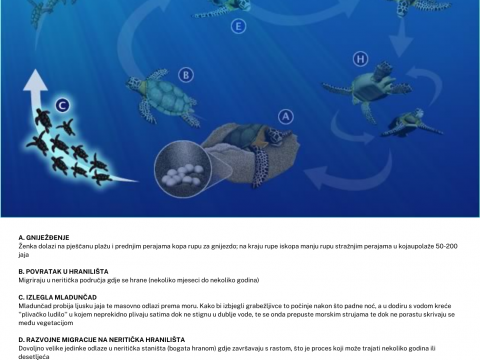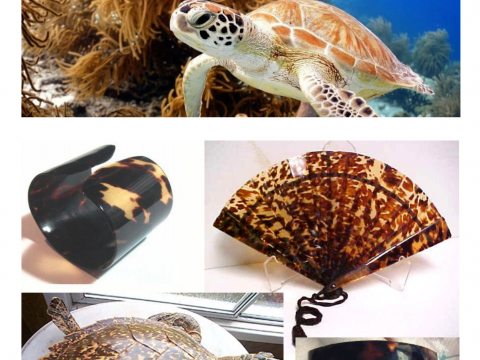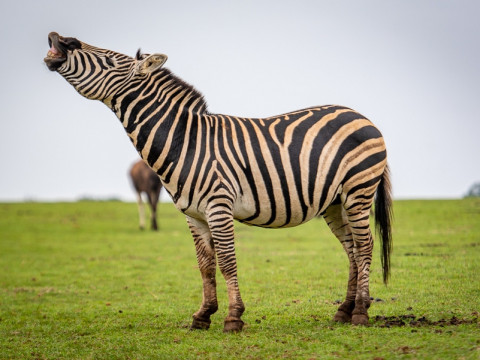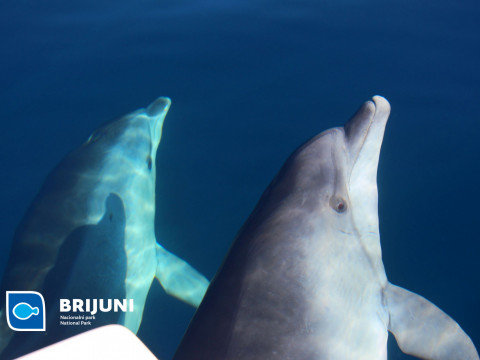World Sea Turtle Day, celebrated on June 16th, highlights the importance of conserving sea turtles and raising awareness about the threats they face. Sea turtles play a crucial role in maintaining ecosystems, as their activities impact many other species within their habitats. Their disappearance would have significant negative consequences on these ecosystems.
This year, in secluded coves of Brijuni National Park, we discovered nine deceased turtles—the highest number recorded to date. We must continue to closely monitor and analyze such changes. To identify the greatest threats to turtles, samples are sent for detailed analysis. This increased detection of issues may result from intensified fieldwork and more careful observation and documentation, efforts we will certainly maintain in the future. Should this situation cause concern? Not necessarily, but we must take steps to understand the causes and protect these endangered species.
Belonging to the order Testudines, sea turtles diverged from other members approximately 110 million years ago (Hirayama, 1998). They demonstrate remarkable adaptability to transition from terrestrial to marine environments. However, reproduction still depends on land, as females lay their eggs on sandy beaches.
The Roles of Sea Turtles
As a keystone species, sea turtles fulfill several critical ecological roles:
- Controlling prey populations: Sea turtles help regulate jellyfish and other prey populations, preventing overpopulation.
- Maintaining healthy seagrass beds: By feeding on seagrass, they stimulate its growth and health. Healthy seagrass beds are vital for many marine species and help prevent coastal erosion.
- Dispersing nutrients: During migrations, sea turtles disperse nutrients across different ocean regions, contributing to marine ecosystem productivity.
Threats to Sea Turtles
Sea turtles face numerous threats, including habitat loss, pollution, climate change, overfishing, hunting, and accidental capture in fishing nets. World Sea Turtle Day calls on the global community to actively participate in their protection and the conservation of the ecosystems they depend on.
Lifecycle of Sea Turtles
A. Nesting: A female comes to a sandy beach and digs a nest with her front flippers. Using her rear flippers, she digs a smaller hole and lays 50–200 eggs. Incubation time varies between 45–70 days, depending on the species.
B. Returning to feeding grounds: After laying eggs, turtles migrate to neritic areas to feed for months or even years.
C. Hatchling emergence: Hatchlings break through their eggshells and head to the sea en masse, usually after sunset to avoid predators. Once they reach water, they enter a "swimming frenzy," swimming nonstop for hours to reach deeper waters where they hide among vegetation until they grow.
D. Developmental migration to neritic feeding grounds: After reaching sufficient size, individuals move to food-rich neritic habitats to continue growing. This process can take several years or decades.
E. Adult migration to breeding grounds: Once adults have enough resources, they migrate to breeding grounds to mate. Females usually return to the beach where they hatched.
F. Multiple mating sessions: Females mate with multiple males to fertilize all their eggs. During this period, males become highly aggressive.
G. Male return to feeding grounds: After failing to find more mates, males migrate back to feeding grounds, while females remain to lay eggs.
H. Staying near the nesting site: Females remain near nesting sites for 1–2 months, laying eggs 2–7 times at intervals of 10–15 days.
The temperature of the surrounding environment determines the gender of sea turtles. To hatch both males and females, the temperature must be between 28–30°C. Higher temperatures result in more females, while lower temperatures yield more males.
Endangerment of Sea Turtles
In addition to natural predators and storms, sea turtles face significant human-caused threats. All seven species of sea turtles are listed on the International Union for Conservation of Nature's (IUCN) Red List of Threatened Species (IUCN 2019).
- Vulnerable species: Caretta caretta, Dermochelys coriacea, and Lepidochelys olivacea.
- Endangered species: Chelonia mydas.
- Critically endangered species: Eretmochelys imbricata and Lepidochelys kempii.
- For Natator depressus, insufficient data is available (IUCN 2019).
Main threats include illegal hunting, egg poaching, accidental capture in fishing nets, and pollution.
Interesting Facts About Sea Turtles
- Green turtles are herbivorous, and their diet gives their cartilage and fat a greenish color.
- Egg-laying: Females typically lay 100–125 eggs per nest, nesting multiple times at two-week intervals.
- Nesting habits: Most sea turtles nest at night, except Kemp’s ridley turtles, which nest during the day.
- Ancient lineage: Leatherback turtles have existed for over 110 million years and can swim more than 10,000 miles annually.
- Early life: Hatchlings spend 7–15 years swimming in the open ocean.
- No shell withdrawal: Sea turtles cannot retract into their shells.
- Prey control: Leatherbacks manage jellyfish populations, and hawksbills consume sponges that compete with coral for space.
- Nesting benefits beaches: Nutrients from eggs and hatchlings that don’t survive support coastal vegetation.
- Carbon storage: Seagrass grazing by green turtles helps maintain seagrass beds, benefiting many species and storing carbon.
How to Protect Sea Turtle Habitats
- Reduce waste that could entangle or be ingested by sea turtles.
- Participate in beach cleanups and reduce the use of single-use plastics.
- Use reusable water bottles and shopping bags.
- Minimize light pollution on nesting beaches.
- Avoid disturbing nesting sites.
Sea turtles are strictly protected species that have inhabited our oceans for over 150 million years. Despite conservation efforts, numerous dead turtles are still found along our shores. Continued collaborative action is essential to ensure their survival for future generations.
This year, special attention was given to protecting the loggerhead turtle (Caretta caretta). In collaboration with Aquarium Pula and the Sea Turtle Recovery Center (https://aquarium.hr/hr/centar-za-oporavak-morskih-kornjaca), efforts include rehabilitation in a 14x10x3-meter outdoor pool. To date, turtles like Roza and Fortuna have successfully recovered in this facility.
What to Do if You Find an Injured Sea Turtle?
If you encounter an injured sea turtle, contact:
- Francisca Lopes: +385 99 527 3314
- Dorotea Ćosić: +385 99 499 9736
- Alena Sprčić: +385 99 303 5468
 Parks of Croatia
Parks of Croatia
 EU projects
EU projects English
English











































